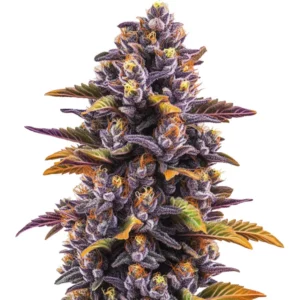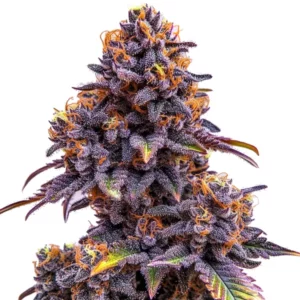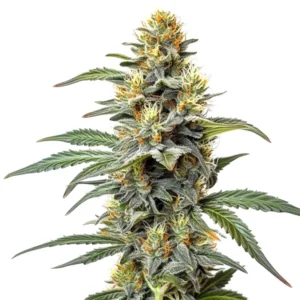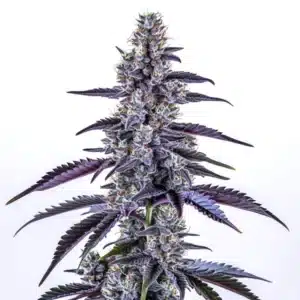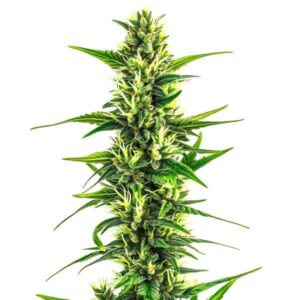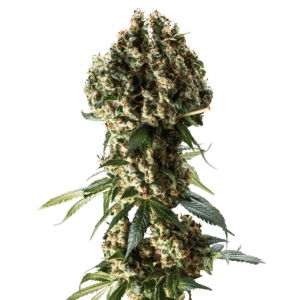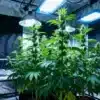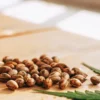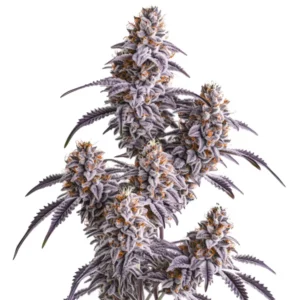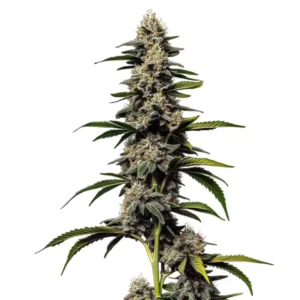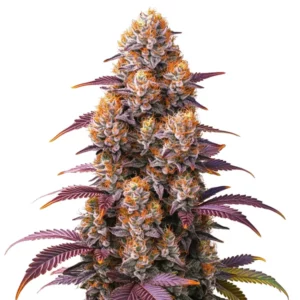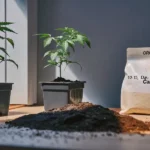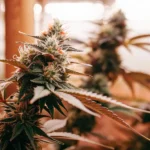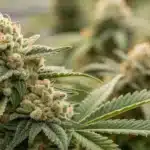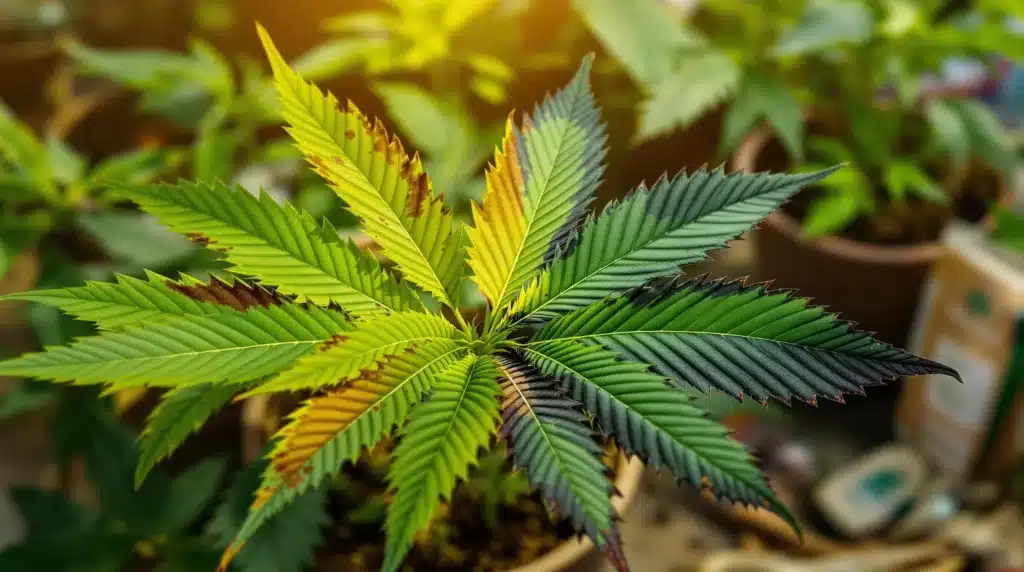
Why Cannabis Leaves Might Change Color
Cannabis is a wonderfully diverse and resilient plant, but sometimes growers encounter an alarming sight: the leaves of their plants taking on a dark hue. Cannabis leaves turning black can signal various underlying issues, and recognizing the causes is essential to ensure the vitality of your plants. In this article, we’ll explore the reasons behind blackened leaves and offer practical, friendly tips to maintain the flourishing health of your cannabis garden.
Why Are My Cannabis Leaves Taking on a Dark Hue?
Noticing your cannabis leaves change color can evoke concern. Dark leaves may indicate several potential issues, such as nutritional shortfalls, excessive watering, or pest problems. In the sections below, we’ll examine each cause and its remedy, step by step, to help you get your plants back to their vibrant selves.
Recommended Strains
Forbidden Fruit
|
|
THC | 23% - 26% (High) |
|
|
Type | Feminized |
|
|
Yield | Medium |
|
|
Phenotype | 70% Indica / 30% Sativa |
Forbidden Fruit Auto
|
|
THC | 20% - 22% (Medium) |
|
|
Type | Autoflowering |
|
|
Yield | Medium |
|
|
Phenotype | 75% Indica / 25% Sativa |
Nutritional Shortfalls
One prominent reason for cannabis leaves turning dark is a deficiency in essential nutrients. Plants require key elements such as nitrogen, phosphorus, and potassium to thrive. When these nutrients are lacking, leaves may change color and exhibit signs of distress.
- Nitrogen Deficiency: Typically starts with yellowing leaves that can progress to dark brown or black.
- Phosphorus Deficiency: Dark leaf tips often signal this deficiency, presenting as a deepening hue along the edges.
- Potassium Deficiency: This usually results in dark spots and browning along the leaf margins, indicating a serious issue with plant health.
To address these deficiencies, it’s wise to use a balanced, nutrient-rich fertilizer. Be sure to adhere to the instructions regarding dosage to avoid over-fertilizing, as this can contribute to various problems, with cannabis leaves turning black being a common sign of plant stress. Remember, moderation is key!
Another beneficial practice is to rotate the type of fertilizers used. This can ensure a broader range of nutrients is supplied over time, as no single fertilizer can supply all the elements your cannabis plants might need throughout their lifecycle.
Excessive Watering
Excessive watering is another factor that can lead to darkening leaves in cannabis plants. Too much water can suffocate the roots, creating a host of problems, including root rot. When the roots are compromised, they struggle to absorb nutrients, resulting in discolored foliage.
A practical approach to prevent excessive watering is to establish a watering routine that suits your plants’ needs. Stick your finger about an inch into the soil; if it feels damp, wait a little longer before adding more water. Adequate drainage in your pots is essential, as it allows excess water to escape, preventing the roots from sitting in overly wet soil—a common issue that can contribute to leaves turning black during flowering.
Moreover, consider the type of soil you are using. Well-draining soil can significantly help manage water levels effectively. You might want to explore soil mixes specifically designed for cannabis cultivation, which often have improved aeration and drainage properties.
Pest Issues
An infestation of pests could also be a reason for leaves turning dark. Tiny creatures like spider mites and aphids can drain sap from plants, leading to stress and noticeable changes in leaf coloration. As plants struggle to fend off these invaders, they may develop dark spots reminiscent of scorch marks.
Regularly inspecting your plants for any signs of pests is crucial. Look closely at the undersides of leaves and around stem joints for tiny insects or webbing. If you spot unwelcome visitors, promptly apply insecticidal soap or neem oil as a natural remedy. Ensure to cover the entire plant, following the guidelines to maximize effectiveness.
Additionally, introducing beneficial insects like ladybugs can naturally control pest populations in your garden. These friendly creatures feast on unwanted pests without harming your cannabis plants, creating a balanced ecosystem.
Promos & Deals
Diagnosing the Underlying Issue
Diving deeper into plant health can help pinpoint the exact cause of cannabis leaves turning black. Observing environmental factors, nutrition levels, and pest presence will enable you to identify the headaches affecting your plants.
Environmental Factors
Temperature and humidity play a pivotal role in plant health. Cannabis plants thrive within specific conditions, and extreme fluctuations can lead to distress, often manifesting as dark leaves.
- Temperature: Aim to maintain daytime temperatures between 70°F and 85°F, allowing slight cooling during the night.
- Humidity: During the vegetative phase, aim for around 40-60% humidity, dropping to about 40-50% in the flowering phase.
Creating a stable environment will greatly reduce unnecessary stress on your plants, minimizing the possibility of color changes like darkened leaves. Regularly monitoring these conditions ensures a nurturing space for growth.
For growers using controlled environments, like grow tents, investing in a reliable thermometer and hygrometer can provide valuable insights. This knowledge helps inform adjustments you may need to make for optimal plant performance.
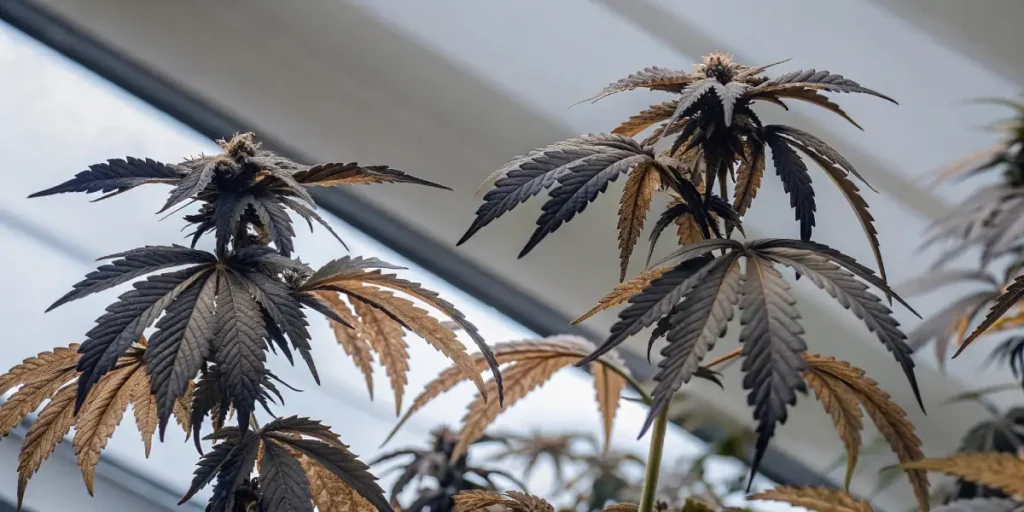
Testing Nutrient Levels
If you’re uncertain about nutrient balance in your soil, consider investing in a soil test kit. These kits provide insights into pH levels and nutrient content, enabling you to make informed decisions. Ideally, soil pH should be between 6.0 and 6.8 for most cannabis plants.
Once you have test results, if you identify specific deficiencies, look for organic fertilizers that cater to your plants’ needs. Continuously testing soil throughout the growing cycle allows you to maintain nutrient balance and support healthy growth.
Preventing Dark Leaves in Cannabis Plants
Taking proactive measures significantly decreases the probability of encountering dark leaves in your garden. By consistently providing excellent care and ensuring optimal growing conditions, you can nurture your plants to thrive without disruptions.
Routine Maintenance
Establishing a consistent care routine is crucial for cannabis plants to flourish. This means monitoring watering schedules, inspecting your plants for pests, and regularly checking for any signs of nutrient deficiencies. Staying vigilant helps catch potential issues before they spirals out of control.
- Develop a watering schedule tailored to your plant’s specific needs.
- Inspect leaves weekly for any changes in color, texture, or presence of pests.
- Maintain a regular fertilization schedule but be cautious about the amounts used.
Such diligence cultivates a healthier growing space, decreasing the likelihood of facing problems related to blackened leaves. Your plants will thank you with their vibrant appearance!
Gaining Knowledge from Experience
Every grower faces obstacles throughout their journey. Keeping a journal detailing what works well and what doesn’t can be immensely valuable. Documenting how your plants respond to various treatments can guide your future decisions and enhance your farming approach.
Engaging with fellow cannabis enthusiasts through forums, social media groups, or local clubs can offer invaluable insights and shared experiences. Learning from others fosters a sense of community and aids in refining your own practices.
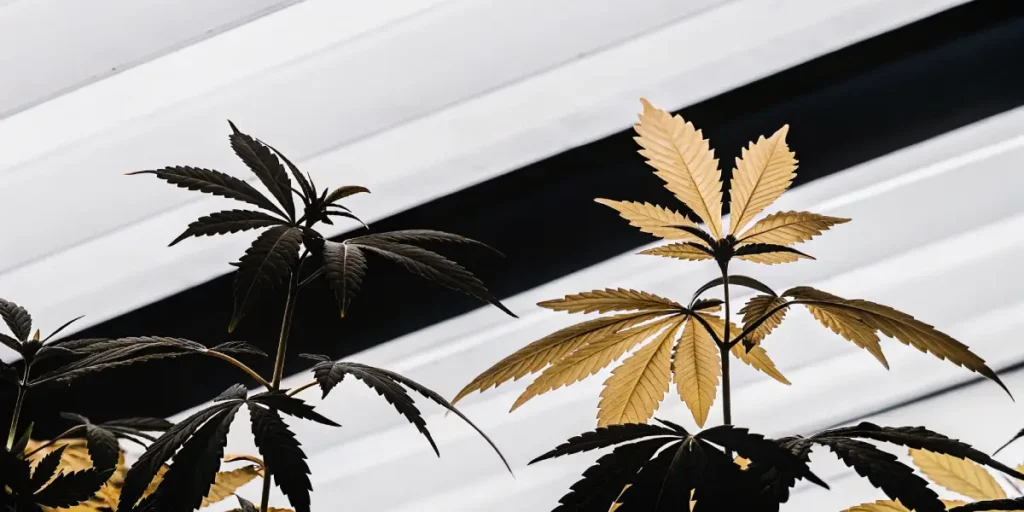
FAQs about cannabis leaves turning black
What does it signify when the leaves of my cannabis plants change to a dark hue?
Dark leaves can indicate nutritional shortfalls, excessive watering, or pest concerns. Evaluating these factors can efficiently pinpoint the specific issue at hand.
Can environmental conditions lead to cannabis leaves darkening?
Indeed, extreme temperatures or humidity levels outside the ideal range can stress plants and contribute to dark leaves.
How can I remedy nutritional deficiencies in my cannabis plants?
Utilizing a balanced fertilizer can assist in addressing nutritional shortfalls. Soil testing can also provide clarity on necessary adjustments.
Is excessive watering a frequent error among cannabis growers?
Absolutely. Many growers tend to water too frequently. Always verify soil moisture before watering, and ensure your pots have adequate drainage to prevent overwatering.
What steps should I take if I discover pests on my cannabis plants?
Assess the severity of the infestation. For minor cases, insecticidal soap or neem oil can effectively repel pests. Be sure to treat the entire plant for the best results.


